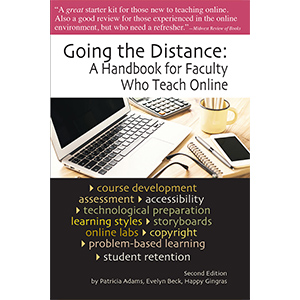How Do You Engage Students with Your Feedback?

 By Bruce A. Johnson, Ph.D., MBA
By Bruce A. Johnson, Ph.D., MBA
As an adjunct you are often spending a significant amount of time developing feedback for your students, especially for their written assignments. The developmental progress of your students is strengthened when you provide meaningful feedback and they respond to it, either through their actions and improved performance or their follow up questions to you.
How do you react when students don’t respond to your feedback? What if they continue to make the same mistakes and their performance does not improve? Do you assume that students aren’t reading the feedback provided or perhaps they aren’t interested in it? It can be very frustrating when you have invested time and thought into the feedback, especially when you have addressed their individual developmental needs, and students do not seem responsive to it. If this has happened to you it may be helpful to reflect upon the feedback provided and consider what techniques are likely to encourage students to be active participants in this process.
Feedback Self-Check
As you begin to review the feedback provided to your students, have you considered the students perspective and how they may interpret what you have written? For example, do you find that detailed narratives are more effective than one word responses or brief comments? Are you talking at students or are you attempting to work with them? Students may be naturally defensive if an instructor is telling them what is wrong without providing supportive comments or constructive criticism. An instructor’s approach to feedback, along with his or her attitude about students and their potential, has a direct bearing on the tone and delivery of the message. Students’ responsiveness may also be related to their perception of the instructor’s willingness to assist them. This reminds instructors of the importance and impact of their word choices, which can encourage students to be receptive to feedback or cause them to discount it.
Consider These Questions
If you find that students are not responding to feedback, there are additional questions to consider as a means of understanding your students’ perspective. Do you believe that your students are not reading the feedback or is it possible that they are reading it and intentionally ignoring it? Another possibility to consider is that students who are struggling from a developmental perspective may not fully understand or comprehend what you have written. If students are continuing to make the same types of mistakes or they receive a low score on the assignment, they may be experiencing frustration and not able to fully recognize how they need to improve their performance. Students may also be confused about the assignment expectations if the criteria have not been fully explained. From your students’ perspective you may also consider if they are comfortable asking questions and if they feel that you are receptive to their inquiries.
Encourage Responsiveness
The goal of feedback is to assess the students’ progress with meeting the assignment requirements and learning objectives, while also demonstrating progress with development of specific skills, including writing and critical thinking skills. One method of engaging students is to include reflective questions within your feedback that asks them to reflect upon this assignment, the related course topics, and their overall progress. The inclusion of thought-provoking questions may prompt students to evaluate their academic development, while providing an opportunity for meaningful dialogue to occur with them.
Follow Up, Follow Through
If you have provided feedback that includes reflective questions and students do not respond, what approach would you utilize at that point? For an online instructor there is a greater challenge for engaging students because of the lack of face-to-face interaction. Would you consider posting follow-up questions and asking students to respond directly to them? It is understandable that you may not have a lot of time to develop feedback, ask reflective questions, and then develop additional follow-up questions. This method of follow through may be necessary only for students who have significant developmental challenges; however, consistent effort and follow-up may make a difference for those students who require additional assistance.
Progress Check
Another technique to consider implementing prior to an assignment due date is the use of a self-check, which you can ask students to complete as a means of encouraging an assessment of their own progress. Through the use of a non-graded activity such as a self-check, students can be encouraged to ask questions and this is likely to provide you with an opportunity to offer developmental guidance, resources, and techniques. This would also enhance the feedback provided as you can relate their response or assignment back to discussions you had about their progress in the prior self assessment.
Wrap-Up
The purpose of devoting time and attention to the feedback provided is to encourage student engagement in the class and the process of learning. Many of the techniques suggested require an additional investment of time; however, by implementing these strategies you may find that a proactive approach addresses non-responsive students in a way that encourages academic progress and a receptive attitude towards your feedback. This can also strengthen your working relationships with students and help to facilitate effective communication.
About the Mentor: Dr. Bruce Johnson has had a life-long love of learning and throughout his entire career he has been involved in many forms of adult education; including teaching, training, human resource development, coaching, and mentoring. Dr. J has completed a master’s in Business Administration and a Ph.D. in the field of adult education, with an emphasis in adult learning within an online classroom environment. Presently Dr. J works as an online adjunct instructor, faculty developmental workshop facilitator, and faculty mentor.








